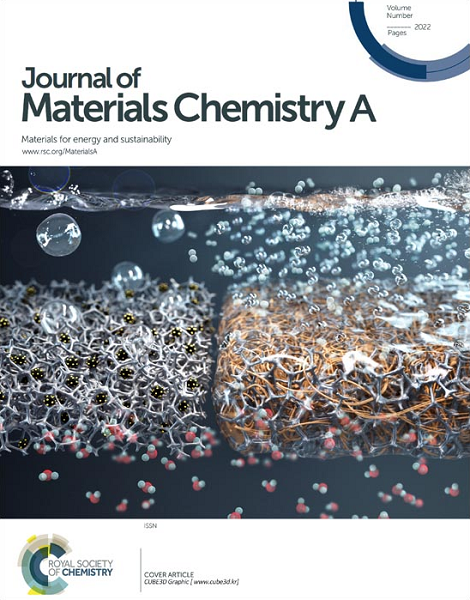Synergistic Screening of High-Performance TMDs/2D-LHPs Heterostructures for Solar Cells via Deep Learning and DFT
IF 10.7
2区 材料科学
Q1 CHEMISTRY, PHYSICAL
引用次数: 0
Abstract
Two-dimensional layered hybrid perovskites (2D-LHPs) and transition metal dichalcogenides (TMDs) heterostructures exhibit exceptional optoelectronic properties, making them highly promising for photovoltaic and optoelectronic applications. However, due to the vast number of possible heterojunction combinations, efficiently screening high-performance materials remains a challenge. In this study, a deep learning model is employed to systematically predict the band alignment types of TMDs/2D-LHPs heterostructures, identifying 3,510 potential Type-II heterostructures. Further screening criteria are applied to select 99 heterostructures for high-throughput density functional theory (DFT) calculations, evaluating their photovoltaic conversion efficiency (PCE). The results reveal that 10 heterostructures achieve a PCE exceeding 20%, with the highest reaching 22.43%. Notably, some of these heterostructures exhibit low effective masses and high carrier mobilities (~10⁴ cm²/V·s). Additionally, optical absorption coefficient calculations indicate that all 10 heterostructures possess strong light absorption capabilities (~10⁵ cm⁻¹), highlighting their significant potential for solar energy applications. Furthermore, deep learning methods are utilized to predict the PCE of the remaining 3,411 TMDs/2D-LHPs heterostructures based on computational data, providing valuable guidance for both experimental and theoretical research.基于深度学习和DFT的太阳能电池高性能TMDs/2D-LHPs异质结构协同筛选
二维层状杂化钙钛矿(2D-LHPs)和过渡金属二硫族化合物(TMDs)异质结构具有优异的光电性能,使其在光伏和光电子应用中具有很高的应用前景。然而,由于有大量可能的异质结组合,高效筛选高性能材料仍然是一个挑战。本研究采用深度学习模型系统预测了TMDs/2D-LHPs异质结构的波段对准类型,共识别出3510个潜在的ii型异质结构。进一步筛选标准应用于选择99异质结构进行高通量密度泛函理论(DFT)计算,评估其光伏转换效率(PCE)。结果表明,有10种异质结构的PCE超过20%,最高的达到22.43%。值得注意的是,其中一些异质结构表现出低有效质量和高载流子迁移率(~10⁴cm²/V·s)。此外,光学吸收系数计算表明,所有10种异质结构都具有很强的光吸收能力(~10 5 - cm⁻¹),突出了它们在太阳能应用方面的巨大潜力。在此基础上,利用深度学习方法对剩余的3411个tmd / 2d - lhp异质结构的PCE进行了预测,为实验和理论研究提供了有价值的指导。
本文章由计算机程序翻译,如有差异,请以英文原文为准。
求助全文
约1分钟内获得全文
求助全文
来源期刊

Journal of Materials Chemistry A
CHEMISTRY, PHYSICAL-ENERGY & FUELS
CiteScore
19.50
自引率
5.00%
发文量
1892
审稿时长
1.5 months
期刊介绍:
The Journal of Materials Chemistry A, B & C covers a wide range of high-quality studies in the field of materials chemistry, with each section focusing on specific applications of the materials studied. Journal of Materials Chemistry A emphasizes applications in energy and sustainability, including topics such as artificial photosynthesis, batteries, and fuel cells. Journal of Materials Chemistry B focuses on applications in biology and medicine, while Journal of Materials Chemistry C covers applications in optical, magnetic, and electronic devices. Example topic areas within the scope of Journal of Materials Chemistry A include catalysis, green/sustainable materials, sensors, and water treatment, among others.
 求助内容:
求助内容: 应助结果提醒方式:
应助结果提醒方式:


